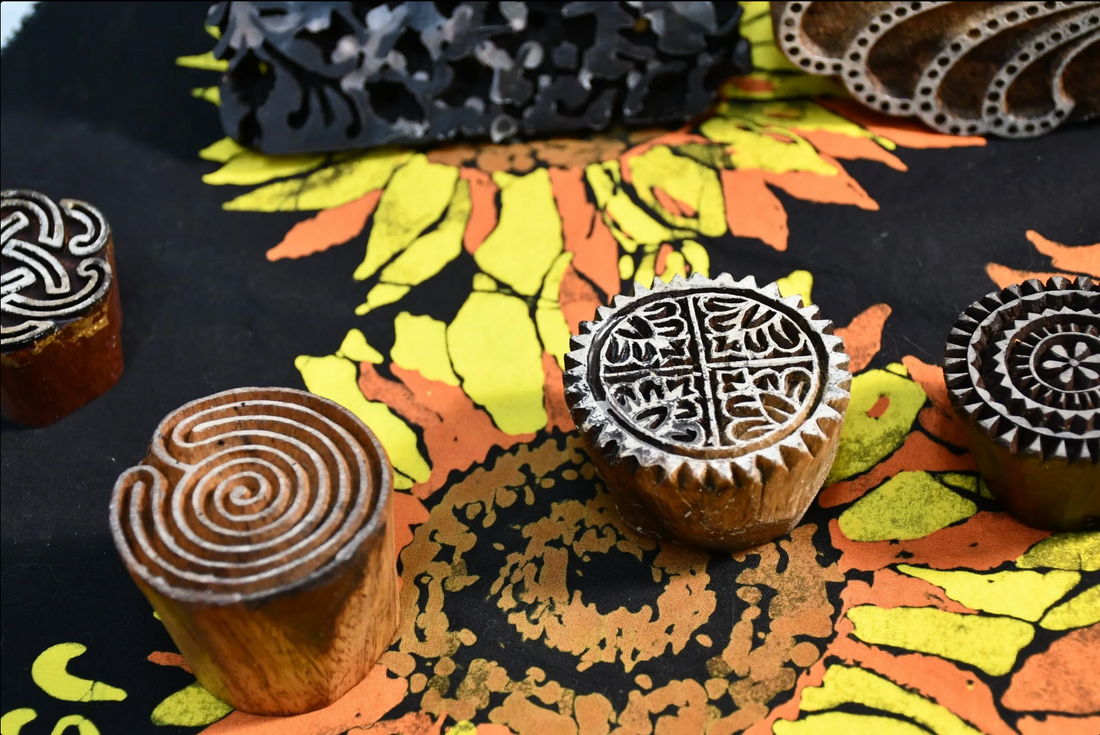
The Zen of Batik
Why there are 10 million oil painters in the world and only 10,000 batik artists.
Guest edited by Jonathan Evans
The answer is actually very simple: Batik is not for everyone. The medium is either incomprehensible or unappealing to most artists- which makes batikers a very odd bunch. There are several reasons for this.
The first is that it takes a special, convoluted mind to be able to figure out the complexities of the art. In figurative or representational oil painting, for example, one tends to work from dark masses to light-coloured details. In other words, the oil painter blocks in his masses of colour and then progressively refines these masses until, at the end, he paints in his highlights. There is a simple and understandable logic to this process. Conversely and perversely, the batik artist seems to work backwards. To do accurate representational work, his or (more commonly) her planning has to be impeccable for the artist needs to start with a clear image of the finished work and then progress from light to dark. The tiny details, in white or very light colours, are dyed first, and then waxed over to protect them from successive later dyes.
The obvious reason for this is that one can dye a dark colour over a light but not a light colour over a darker. The batik artist has to work through a fairly strict sequence of dyes, ending up with black or the darkest colour. In figurative batik, which is my field, there is not much room for major deviations, improvisations or spontaneity. It is a question of first figuring out the problems of going from Point A, the imagined finished batik painting, to Point B, a white piece of cloth - by working backwards! It can be a mind-teaser of the highest order, a piece of twisted logic and inverted creativity. It can defeat or break even the strongest woman or man! But batik can, through the tortuous journey involved, bring great compensation and give unimaginable pleasure in its creation.

Image: Tjantings. Image above: wood batik.
Guest edited by Jonathan Evans
The answer is actually very simple: Batik is not for everyone. The medium is either incomprehensible or unappealing to most artists- which makes batikers a very odd bunch. There are several reasons for this.
The first is that it takes a special, convoluted mind to be able to figure out the complexities of the art. In figurative or representational oil painting, for example, one tends to work from dark masses to light-coloured details. In other words, the oil painter blocks in his masses of colour and then progressively refines these masses until, at the end, he paints in his highlights. There is a simple and understandable logic to this process. Conversely and perversely, the batik artist seems to work backwards. To do accurate representational work, his or (more commonly) her planning has to be impeccable for the artist needs to start with a clear image of the finished work and then progress from light to dark. The tiny details, in white or very light colours, are dyed first, and then waxed over to protect them from successive later dyes.
The obvious reason for this is that one can dye a dark colour over a light but not a light colour over a darker. The batik artist has to work through a fairly strict sequence of dyes, ending up with black or the darkest colour. In figurative batik, which is my field, there is not much room for major deviations, improvisations or spontaneity. It is a question of first figuring out the problems of going from Point A, the imagined finished batik painting, to Point B, a white piece of cloth - by working backwards! It can be a mind-teaser of the highest order, a piece of twisted logic and inverted creativity. It can defeat or break even the strongest woman or man! But batik can, through the tortuous journey involved, bring great compensation and give unimaginable pleasure in its creation.

Image: Tjantings. Image above: wood batik.
Want to read more of this article?
We are proud to be a subscriber-funded publication with members in 185 countries. We know our readership is passionate about textiles, so we invite you to help us preserve and promote the stories, memories, and histories that fabric holds. Your support allows us to publish our magazine, and also ‘what's on’ information, and subscription interviews, reviews, and long-read articles in our online blog.
ALREADY A SUBSCRIBER? CLICK HERE TO ACCESS CONTENT

